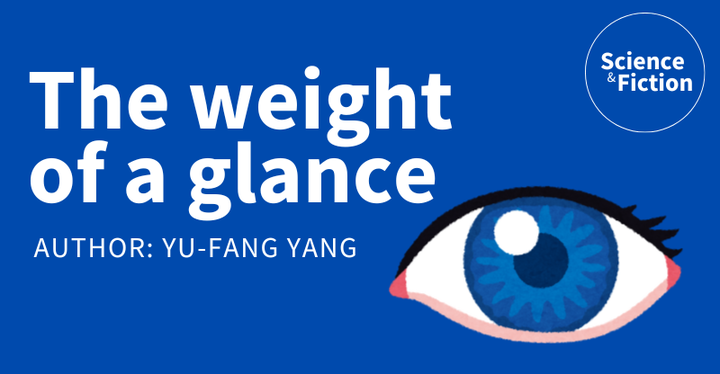
Have you ever wondered why being ignored while someone looks directly at you feels worse than when they don’t look at you at all?
Content warning
None
The short story
That evening, walking home through Berlin’s tree-lined streets, Yuki found herself studying the intricate language of gazes around her. A couple sat at a café terrace, their eyes meeting and breaking contact in a delicate dance that spoke of belonging. When one looked away briefly, the other’s expression shifted ever so slightly, until their gazes met again and their connection was restored.
Near the canal, she watched a group of friends walking together. One person spoke animatedly, but no one quite met their gaze. Their words seemed to float away unanchored, just as Yuki’s had during the meeting. The speaker’s voice grew louder, then softer, searching for the right volume that might make the others look at them. Yuki recognized that familiar ache of reaching for connection and finding only empty air.
At a crosswalk, a tourist tried to ask for directions. The first person they approached kept their eyes fixed on their phone, creating an invisible barrier that said “not welcome” more clearly than words ever could. But when the tourist caught another passerby’s direct gaze, the connection was immediate - a small moment of inclusion formed through nothing more than a meeting of eyes.
Yuki understood now why the meeting had left such a deep mark. It wasn’t just about being heard - it was about being seen. Each averted gaze had been a tiny rejection, each looked-past moment a small exclusion. But equally, each direct look could have been a lifeline, a silent acknowledgment saying “you belong here”.
She realized that tomorrow she would return to that meeting room different - not because the others would necessarily change, but because she now understood the power of these silent signals. Sometimes the deepest wounds of exclusion, and the strongest moments of connection, aren’t spoken at all - they’re written in the simple act of where we choose to look.
This story was originally written in English.
The paper
Yang, Y. F., Fang, X., & Niedeggen, M. (2025). Direct and averted gaze modulate the event-related brain responses to social exclusion signals. Scientific Reports, 15(1), 13396. https://doi.org/10.1038/s41598-025-97840-4
Connection between story and paper
Have you ever noticed how being ignored feels different when someone looks directly at you compared to when they look away? We wanted to understand exactly this - how eye contact affects our feelings when we’re being left out. Using Cyberball, a well-established virtual ball-tossing game known for studying social exclusion, we examined how participants responded when being excluded while others either looked at them directly or looked away. We measured both their brain activity and how they felt during this interaction.
What we discovered was interesting: when people were looked at directly while being excluded, their brains showed a stronger “surprise” response, suggesting that direct gaze might create stronger expectations for social inclusion. Participants who experienced averted gaze during exclusion reported more negative mood compared to those who received direct gaze. This suggests that gaze direction plays a role in how we process and experience social exclusion, though the relationship is complex.
This is why the story “The Weight of a Glance” resonates - it brings these scientific findings to life through everyday experiences. When Yuki notices how different types of gazes affect her feelings of inclusion or exclusion, she’s experiencing what we observed in our research: how the direction of someone’s gaze can influence our expectations and experiences in social situations. The story helps readers - you, understand these complex findings by showing how gaze direction shapes our daily social experiences.
The author
Yu-Fang Yang is a cognitive neuroscientist at Freie Universität Berlin investigating the neural mechanisms of social signals, particularly facial expressions and eye gaze. Combining electroencephalography (EEG), eye-tracking, and computational modeling, she explores how gaze direction shapes social exclusion experiences. A dedicated advocate for open science practices, she leads several international initiatives to improve research transparency and reproducibility in neuroscience. Follow her on her website: https://www.yufang-yang.com.